The greatest macroeconomic story ever told? How high rates and boomer spending saved
[ad_1]
(Kitco News) – With the Federal Reserve signaling at their May meeting that they fully intend to keep interest rates at highs not seen in over 20 years until stubborn inflation levels show sustained improvement, market participants have resigned themselves to expensive capital and credit costs for the foreseeable future.
According to mainstream economic theory, this means Americans will be poorer, job losses will rise, consumer spending will be depressed, companies’ bottom lines will suffer, and economic growth will decline. But that’s the price we pay to rein in runaway inflation, right?
The problem with this view is that, according to many key indicators, over a year and a half into the Fed’s tightest monetary policy in a generation, the exact opposite has happened: Companies are posting record profits and paying high dividends as equity indexes set new all-time highs, the economy has continued to create new jobs, American consumers have been remarkably resilient, and U.S. growth has remained above-trend longer than anyone anticipated.
With the economy humming blithely along, it should come as no surprise that inflation has not only failed to decline, but multiple recent readings have even surprised to the upside. What gives?
According to a small but growing number of economists and market participants, the orthodox theory of how interest rates impact inflation may be wrong, at least in the current environment. They argue that nearly two years of high interest rates have turned Americans’ bond holdings from boring and safe to wildly profitable, effectively growing their wealth, which in turn has contributed to increased spending, strong business activity… and rising inflation.
Marc Chandler is Managing Director at Bannockburn Global Forex. He told Kitco News that ‘the higher-rates-are-stimulative’ camp was done no favors when the leader of one of the worst-performing economies championed their position.
“A couple of years ago when the Turkish President Erdogan first suggested that high interest rates were the cause of inflation, and tried to get a succession of central bankers and treasury ministers to take him seriously, it caused a bit of a problem,” Chandler said. “But in the past year or so, there’s been several voices talking about this in the United States, that the high interest rates themselves are fueling inflation.”
Chandler said many have wondered why the U. S. economy is so much more resilient than anybody dreamed it could be under the circumstances. “Is it because interest rates are high? I don’t think so,” he said. “Otherwise, countries like Turkey and Argentina might be growing gangbusters. I think the reason the economy is doing well is because the U.S. budget deficit was about 6.5% of GDP last year, and it’s expected to be about 6% this year, and real wages adjusted for inflation are growing faster than inflation.”
Indeed, while the inflation rate outpaced wage growth for 22 months straight, from April 2021 through Jan. 2023, wages have been rising faster than inflation for the ensuing 14 months to March 2024.
Chandler said he thinks much of America’s purported economic strength is concentrated in one area.
“You basically have three sectors to the economy,” he said. “You’ve got the government sector, in the U.S. government is a big debtor. You’ve got the household sector, and you can see from the consumer credit that many households are stretched.”
“And then you’ve got corporations, and this is where the argument makes the most sense to me,” he said. “Why have corporations’ stocks, earnings, and profits done so well in a much higher interest rate environment?”
Chandler said the reason is that large S&P 500-level corporations have swung from being net borrowers to net lenders and savers.
“That’s the thing, they don’t really need to borrow,” he said. “I think there’s something there with corporations, because the businesses are net savers, net capital surplus, and they’re earning interest on that.”
Chandler said that in the past, this would boost their capital investment more than it would the average Americans’ income, but that’s not the case today.
“Even though businesses have this windfall by being net savers in a higher interest rate environment, they do not seem to be stepping up their business investment,” he said. “Instead, I suspect that they’re doing two other things: boosting dividends and share buybacks. Rather than investing in new plant and equipment, they’re giving it back to shareholders.”
This aligns with what we’ve seen throughout this surprising bull market: companies have indeed been paying out larger dividends and buying back their own stock, and the companies that have done so have been rewarded by investors.
But which investors, exactly? Just as the Fed goes on about the need to drill down past the headline numbers to figure out where exactly the inflation is occurring — is it transitory or permanent? Goods or services? Essentials or luxuries? — it may also be necessary to understand who stands to gain from high interest rates, because it won’t be everyone.
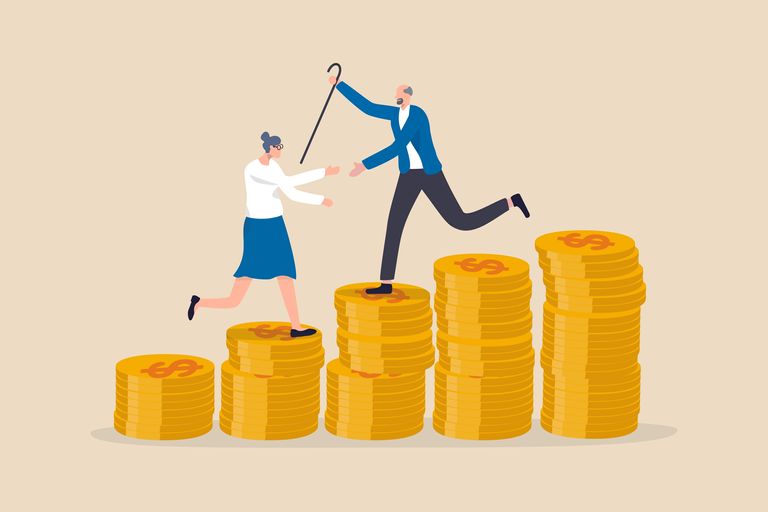
Jeffrey Christian is Managing Director of the CPM Group, one of the world’s leading precious metals and commodities research firms. He’s been closely watching which segments of society are investing in which assets for decades, and he believes the convoluted and counterintuitive story of today’s American economy reads very differently depending on when you were born.
“It’s definitely a demographic issue,” said Christian. “It comes down to the uneven distribution of income and wealth. You have older people who tend to have more money, they’ve been around working and saving for a longer period of time. Traditionally, they might have half — 40 to 60% of their savings and investments — in interest-bearing assets. So when the interest rate is high, they’re earning more interest and they’re feeling wealthier, and when the interest rate is low, they’re feeling like they have less money and they’re worried, so they pull in their horns in terms of spending.”
Christian pointed out that different demographics also do different kinds of spending. “If you look at discretionary income and discretionary expenditures, wealthy older people tend to buy more and have more money, and when the interest rate is rising they’re feeling better and they spend more money,” he said. “That’s the positive correlation between higher interest rates and economic activity.”
“The flip side is that younger people who have less money invested in interest-bearing assets are also spending more money on more important things as opposed to discretionary expenditures,” he said. “Housing and rent and daycare and tuition, and those are the things that are being heavily hit by Inflation right now.”
“Younger people are suffering from the higher interest rates, while older people are benefiting from them.”
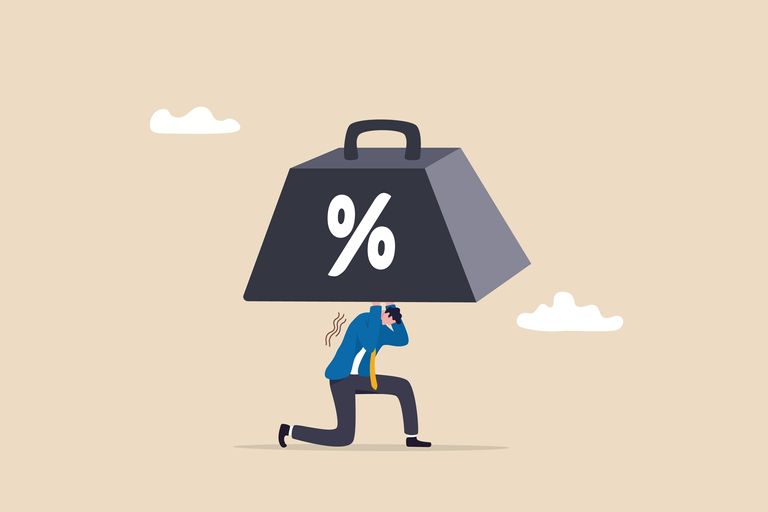
Christian said that much of the consumer spending that’s been propping up the U.S. economy is coming from this kind of discretionary income, though he cautioned that this is a very simple overview, and the real picture is much more nuanced. “There are various things that are going on within that, it’s complex, but that’s the basic footprint.”
He said the key difference between the wealthy retirees of today and those of the past is not qualitative, but only quantitative: The baby boomers, the largest generation in history, are also the richest, and as was the case at every stage of their lives, their impact in their golden years remains disproportionate.
“Previous generations did spend more as they got older too, but they had less to spend, it was at a much lower level,” Christian said. “This economy, everything is supersized now, so the impact of this can be greater. The impact of being in bonds, and being essentially a lender, is magnified.”
Now, identifying which demographics are winners and which are losers is necessary to understand who needs help to stay afloat, and which areas of the transforming economy are likely to break, it can also be misleading. The ‘good’ news of strong growth and rising wages is inextricably intertwined with the ‘bad’ news of inflationary pressures and rising prices, and society has always had unproductive and expensive children, highly productive and tax-paying adults, and capital-rich retirees.
Darin Newsom is Senior Market Analyst at Barchart.com, a leading provider of market data and services to the global financial, media, and commodity industries.
“It’s all of the above,” he said. “It is compelling, and there are different ways that we can look at it.”
The first thing to keep in mind, Newsom said, is that today’s interest rates are only elevated relative to the historic lows of the last twenty-odd years. “These aren’t high rates,” he said. “They’re higher rates than what they were. High rates is what we had back in the 1970s and 80s, and the U.S. survived.”
Newsom also cautioned against singling out one segment of the population, or one sector of the economy, as the driving force behind either the resilience or the inflation. “Consumer demand has been running incredibly strong for almost everything, regardless of price,” he said, “so companies had no fear of raising prices.”
He said that while inflationary readings were coming in, most people didn’t seem too worried when judged on their spending rather than their speech.
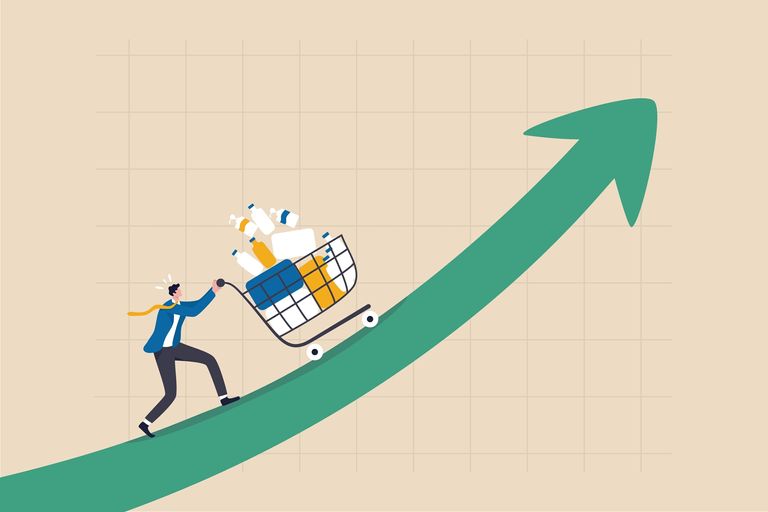
“They like to talk about inflation, but I just go back to the very simplest things,” he said. “As we watched the sporting events, as we watched these major artists doing their global music tours, everything was sold out everywhere, even as prices were going up. Tickets couldn’t be found. Airlines were booked solid as far out as you wanted to go, and their prices were going up.”
Newsom said the data showed that this was not limited to the wealthy, but was spread out across the demographic spectrum. “Consumers couldn’t get enough, and they weren’t being spooked out of the market,” he said.
The people at the bottom, however, were not booking vacations or paying a premium for concert tickets, Newsom acknowledged. They were suffering the effects of higher inflation without the upside of higher returns because they never had the extra income to invest in the first place. “We do know that the lower incomes most likely suffered the most,” he said. “That’s almost always the case in an inflationary market.”
But now, over two years into the Fed’s tightening cycle, Newsom said we’re finally seeing some key consumer markets begin to show weakness, which means that middle-income Americans are feeling the pinch.
“Now we can ask ourselves, is this finally starting to have an effect? And if so, what role has the higher interest rates played? To me, higher interest rates have done their job,” Newsom said. “It did spark some strength in the U.S. dollar, and a stronger dollar is supposed to work against higher prices, baseline commodity prices and these kinds of things.”
Newsom pushed back against the heterodox theory that high rates were the problem rather than the solution. “I don’t see higher interest rates as a root cause of inflation,” he said. “The Fed has done what it could. Where is the breaking point for not just U.S. consumers but global consumers, where they say, ‘okay, enough is finally enough, we’re going to back off, we’re going to change our habits?’ And this starts to force prices down on a simple supply-demand curve.”
That said, Newsom believes that today’s unique demographics, while they’re not the root cause of the economic dislocations, are nonetheless playing a major role in how the recovery and normalization process plays out.
“I think they really do,” Newsom said. “This cuts to the heart of it. What this is doing is it is changing the long-term trend for those who are being pushed either out or back into [key markets], the timeline for putting money away, for buying houses, these sorts of things.”
“At some point, that trend will change and it’ll start to go in their favor. It’s just not going to work out quite as well as it is right now for the boomers,” he said. “Remember, the boomers in their thirties had to go through the 70s and 80s. Now, all of a sudden, it’s working out fine for them. You have to be able to ride through these long-term trends.”
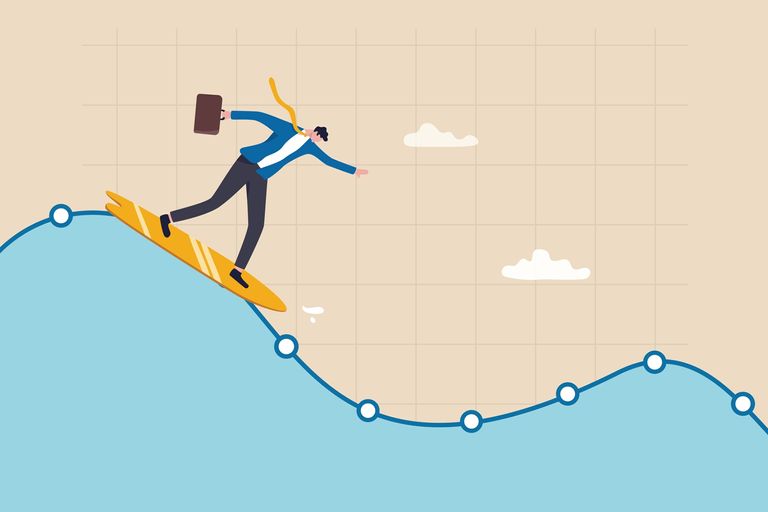
Newsom acknowledged that for the younger generations, the next little while will be bleak. “The short-term trend is very ugly for those in their twenties and thirties,” he said. “I’ve got two kids in that age range and it’s not great for them at all. I can sit back here and say, look, it’s not that bad. And they can say, look, it really is.”
“But the trend will change. Interest rates will come down. Houses will become more affordable. We will see more supply in relation to demand. Those at the very bottom usually struggle through whichever part of the cycle that we’re in, but for the average middle-income 20-30-something struggling right now, history shows it will turn in their favor over the course of their lifetime.”
Of course, this ongoing delay for the younger demographics will continue to be an ongoing windfall for the capital-rich older generations. Newsom agreed that at the end of the day, while the boomers did not cause the post-pandemic supply chain disruptions, nor the ensuing inflation, their unique contribution will likely be propping up economic growth and employment longer than the Fed thought possible (good), which kept inflation higher for longer (bad), which necessitated these higher-for-longer interest rates (age-dependent).
“If you connect the dots enough, the answer is yes,” he said, “simply because it helps you continue to fuel consumer demand from the largest generation with the most money. Is that necessarily a bad thing? No, but what it does is it stretches out the timeframe for these different cycle tops. That’s probably what has changed.”
And while the millennials, Gen Z, and even Gen Xers may be too young (not to mention too poor) to fully appreciate it, this lengthening of the entire cycle may actually be a net positive for everyone.
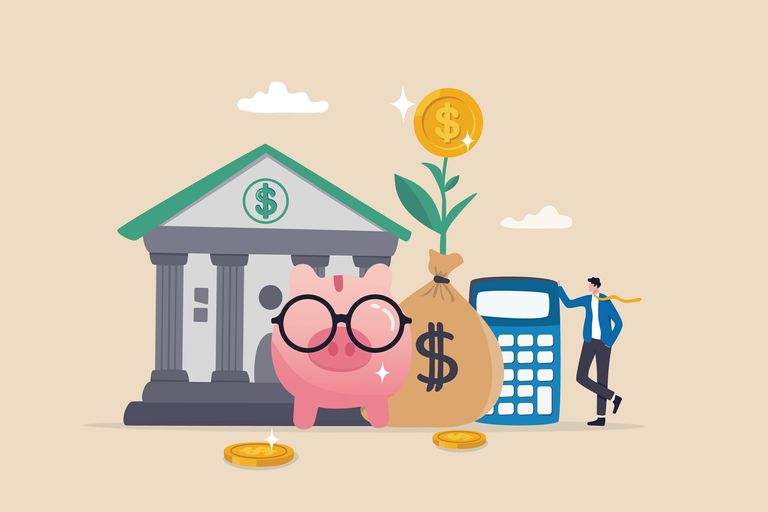
In the past, the wealthiest demographic was neither big enough nor wealthy enough to cushion the blow of rapid rises in inflation or interest rate spikes. In previous eras, when inflation shot up, people immediately couldn’t afford food, gas, and other life necessities, never mind Eras Tour tickets. Instead, consumer spending would crash, business earnings would tank, companies would lay off workers promptly, if not preemptively.
Even when the Federal Reserve was willing to act early and decisively (by no means a given), the speed of these dislocations made it very difficult to calibrate monetary and quantitative policies. When each week brings hundreds of thousands more layoffs, and higher and higher prices for essential goods, central banks don’t have the luxury of waiting for multiple months’ worth of data to diagnose the severity of the problem or to calibrate the precise dose of the potential cure. This is the baked-in recession that everyone has been predicting, based on the fact that this is how things have gone in previous cycles.
Viewed through the lens of history, this longer, more steady, and less volatile cycle, while it presents new challenges, may turn out to be the best possible scenario. If the boomers’ spending cushion and the Fed’s medium-high rates combine to accomplish nothing other than preventing mass unemployment, this would still be among the least damaging downturns in modern history, and one of the greatest macroeconomic stories ever told.
“I think that’s the key takeaway,” Newsom said. “For so long, particularly folks on one side of the political aisle were saying ‘hey, we’re headed for a recession, there’s no doubt, this is unsustainable. The whole thing is going to collapse, it’s going to be Armageddon.’”
“But the fact that consumer demand stayed strong, the fact that employment stayed strong, the fact that we didn’t see unemployment just skyrocket like it tends to do, it painted the picture that the U. S. economy was still strong, and that this inflationary cycle was different than the rest,” he said.
Newsom said that once the Fed finally approached the situation as adults, recognizing that they had no choice but to raise the interest rate, things began to improve along a measured and steady path, with the older generation’s continued support buying them the time to calibrate their speed every step of the way.
“We were just hurtling along with no brakes, and all of a sudden we put the brakes on,” he said. “Now, we didn’t slam the brakes on and go into recession, and cause massive unemployment, and all of the other things that tend to happen. We got a late start on it, but we still applied the brakes gently enough. 10, 12 meetings in a row where the interest rates were raised, but it was never two, three points here and four or five points there.”
Newsom said that he believes the Fed ultimately handled things correctly. “Did it possibly continue the inflation situation? Yes. We’re still dealing with it,” he added. “Do I think we’re headed towards a recession? No, I do not.”
“I think we’ve avoided the hard landing.”
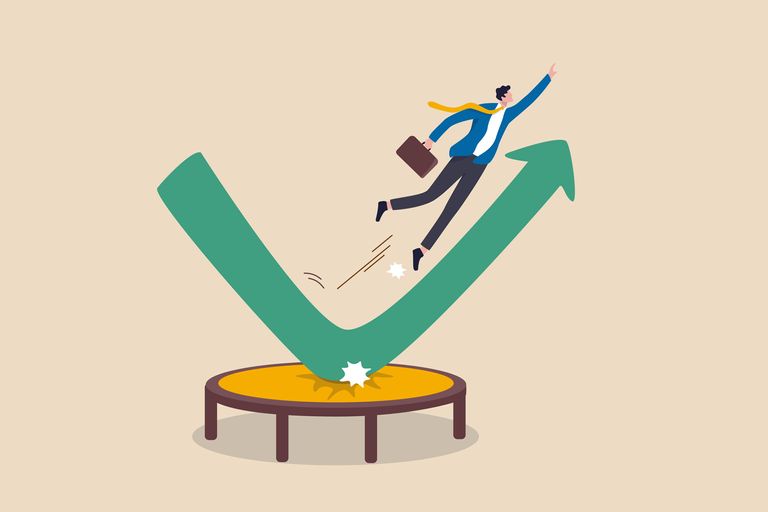
Chandler also said he believes the worst is behind us, and against all odds and any historical precedent, the Fed has likely stuck the landing.
“If you were to ask somebody a year ago, what would a soft landing look like,” Chandler said, “this would probably be pretty close.”
Disclaimer: The views expressed in this article are those of the author and may not reflect those of Kitco Metals Inc. The author has made every effort to ensure accuracy of information provided; however, neither Kitco Metals Inc. nor the author can guarantee such accuracy. This article is strictly for informational purposes only. It is not a solicitation to make any exchange in commodities, securities or other financial instruments. Kitco Metals Inc. and the author of this article do not accept culpability for losses and/ or damages arising from the use of this publication.
[ad_2]
Read Nore:The greatest macroeconomic story ever told? How high rates and boomer spending saved


 Canada
Canada Japan
Japan Germany
Germany Australia
Australia United States
United States United Kingdom
United Kingdom China
China France
France Ukraine
Ukraine Russia
Russia Turkey
Turkey
Comments are closed.